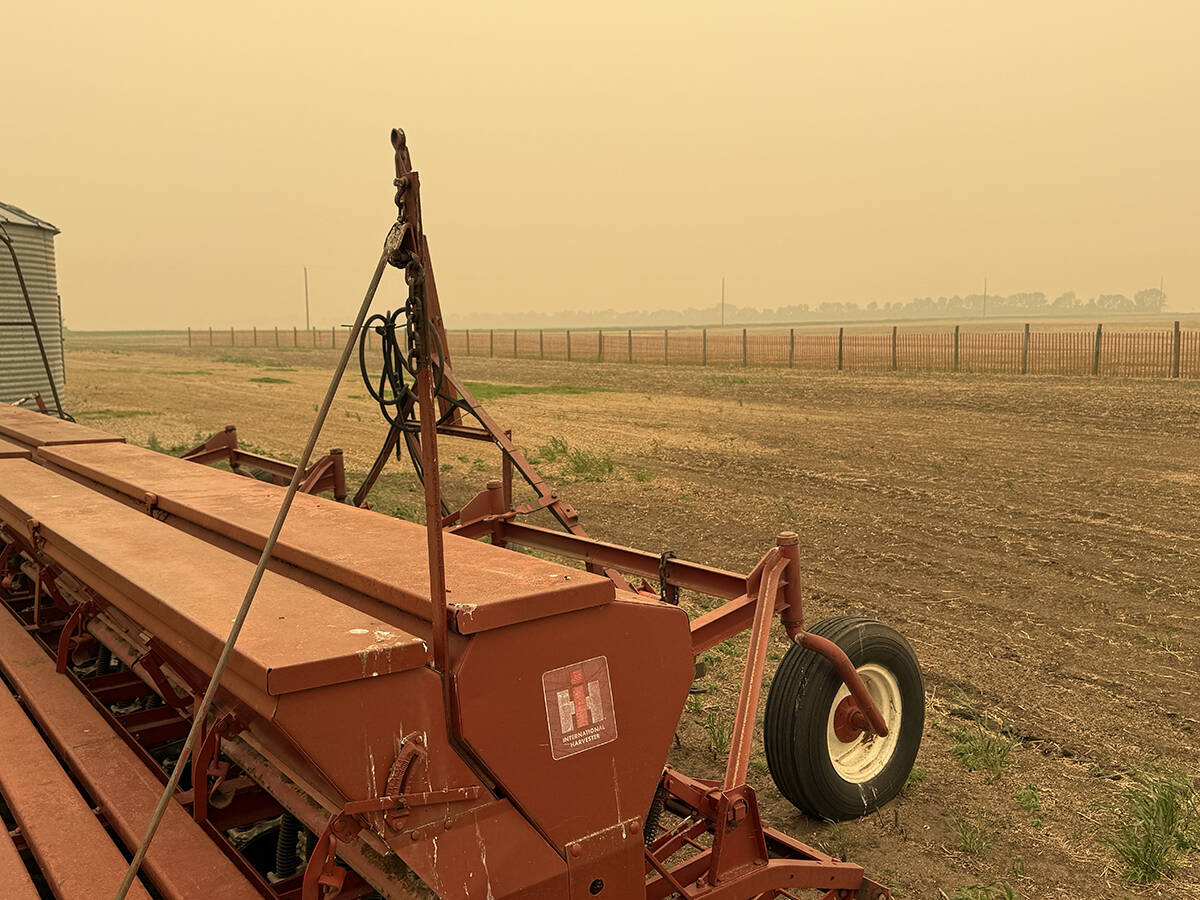The next generation of farmers will be using more technology and smaller equipment, but there still won’t be a replacement for boots on the ground.
Those points were made by three speakers at the University of Leth-bridge Agility Innovation Summit Feb. 9-10.
Colin Rush of Clean Seed Capital Group, Remi Schmaltz of Decisive Farming and Mark Carlson of Verdex Capital told students that a wealth of opportunity exists in the agriculture sector.
The labour shortage seen today in many aspects of agri-business is unlikely to improve, said both Rush and Schmaltz.
Read Also

Wildfires have unexpected upside this year
One farmer feels smoke from nearby wildfires shrouded the July skies and protected his crop from the sun’s burning rays, resulting in more seeds per pod and more pods per plant.
They predict greater use of technology and autonomous equipment as a partial solution.
“If we look at technology today, the reason why we’re going bigger and bigger and bigger right now is because we don’t have people to man the tractor,” Schmaltz said in a later interview.
“If you go to autonomous, the big equipment’s not practical because how do you move it? It becomes a logistics challenge. Today, you’ve got a 110-foot seeder. That’s the increment that you’re working with in the field. When we start getting down to one foot … how do we become more precise, how do these things operate autonomously and bring that efficiency?”
His business supplies data platforms, telematics, weather stations and other precision tools, so he is a proponent of education on the tech side.
“I think they’re pretty huge,” he said of opportunities in agriculture technology in fields such as geospatial analysis, global information systems and tech development.
Fifteen or 20 years ago, people predicted the rise of corporate farms but a few failed enterprises since then showed that model has its flaws.
“I think that a lot of the investors thought that they could come in and run (it) like a CEO, CFO, COO style business and I think the reality is that if you look at a successful farmer today that’s running a 5,000 to 20,000 acre larger farm, those are the guys that are the CEOS but they’re also the boots on the ground,” said Schmaltz.
“So to have this removed management that doesn’t participate in the actual farming operation just isn’t realistic, in North America anyways.”
That said, the capital cost of buying a farm or expanding is enormous, causing many to leave the farm. Though some are now returning, “ultimately there’s still a major consolidation that we’re going to see on the farm.”
Schmaltz predicts more instances of third party investors owning the land, in partnership with farmers who run the operation.
Rush said economies of scale forced many mid-sized farmers to carve out niches for their products, like high protein or direct marketing or organic production. He also sees traceability as a continuing trend, and providing that information to consumers is going to require greater efficiency that can be provided by technology.
Carlson told students about agricultural opportunities related to finance and investment. His Calgary-based investment firm focuses on agricultural technology that is either at or near market entry and requires capital to proceed.
He said his farm background is vital when analyzing the risk.
“When you’re making investment choices, you need people who understand the investment area you are targeting,” he said. An understanding of cash flow, finance and human resources are also key talents.
When it comes to technological advances on the farm, Carlson said they are being driven by farmers, not by big food companies.
“Farmer adoption is the number one issue in ag tech investing, at least. There’s lots of questions about how quickly farmers will adopt.”
Venture capital is not like the television show Dragon’s Den, said Carlson. Assessing the idea or invention involves gauging the management ability of those involved, their willingness to grow and whether their idea or invention has an identifiable competitive advantage.
That requires multiple skills on the part of those investing the capital.















